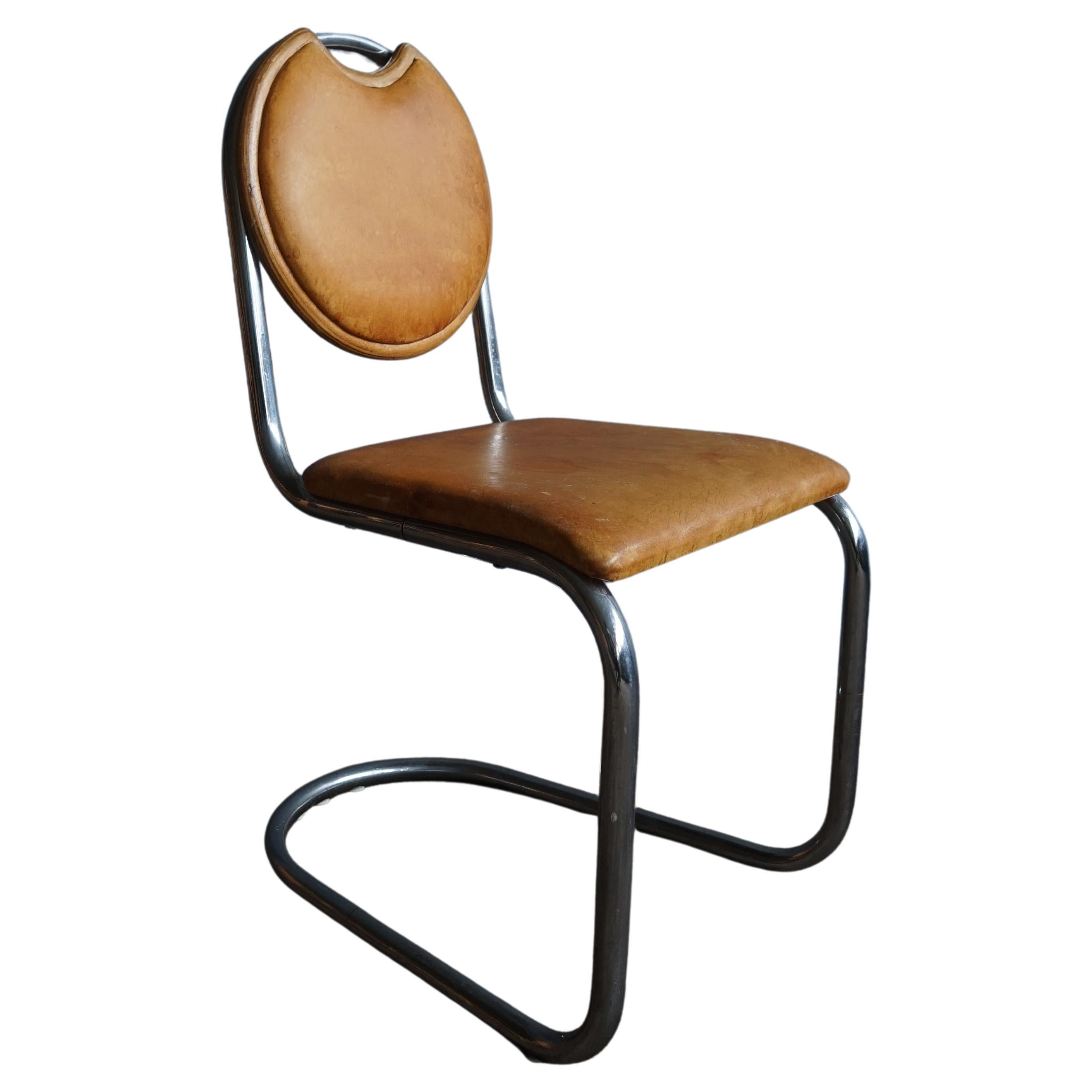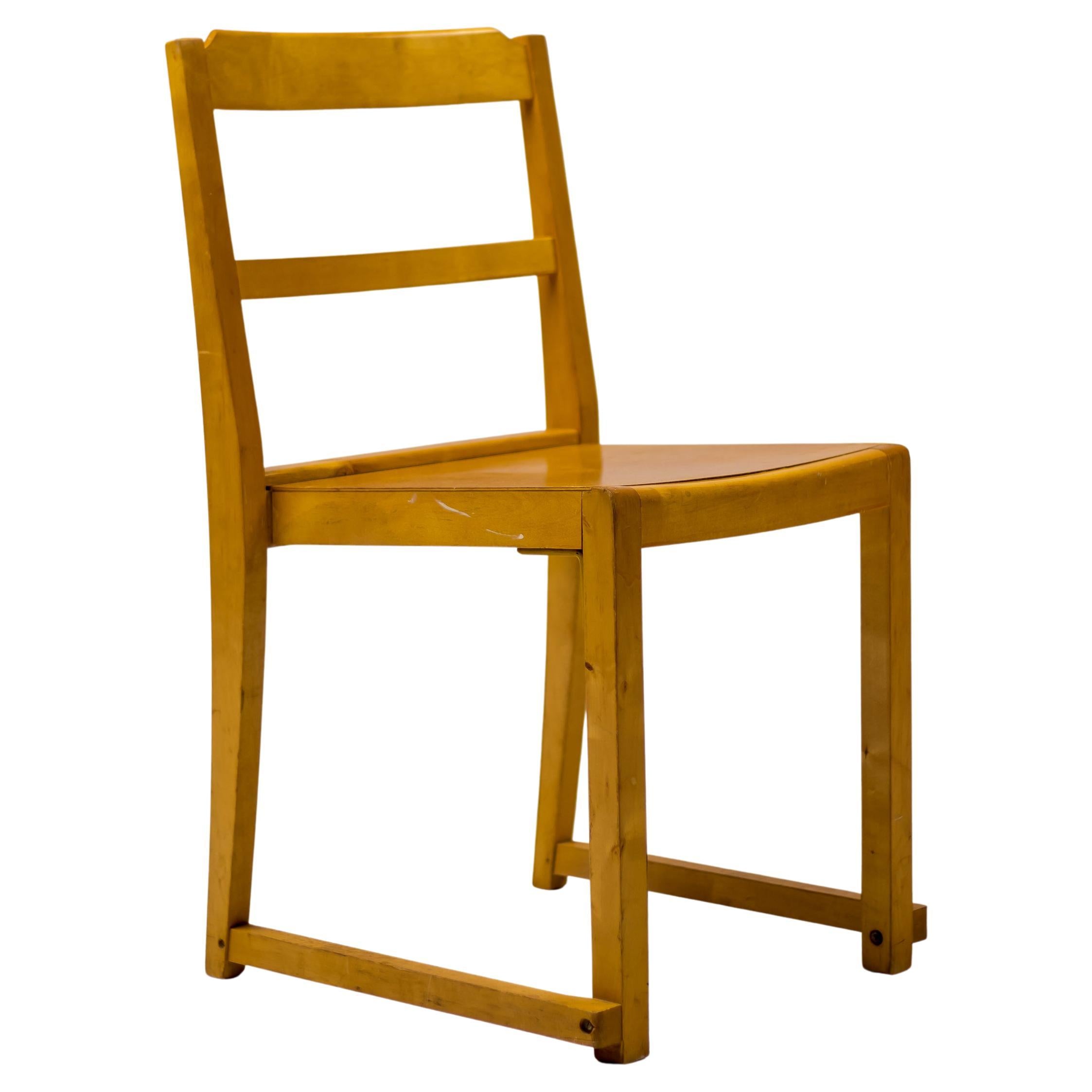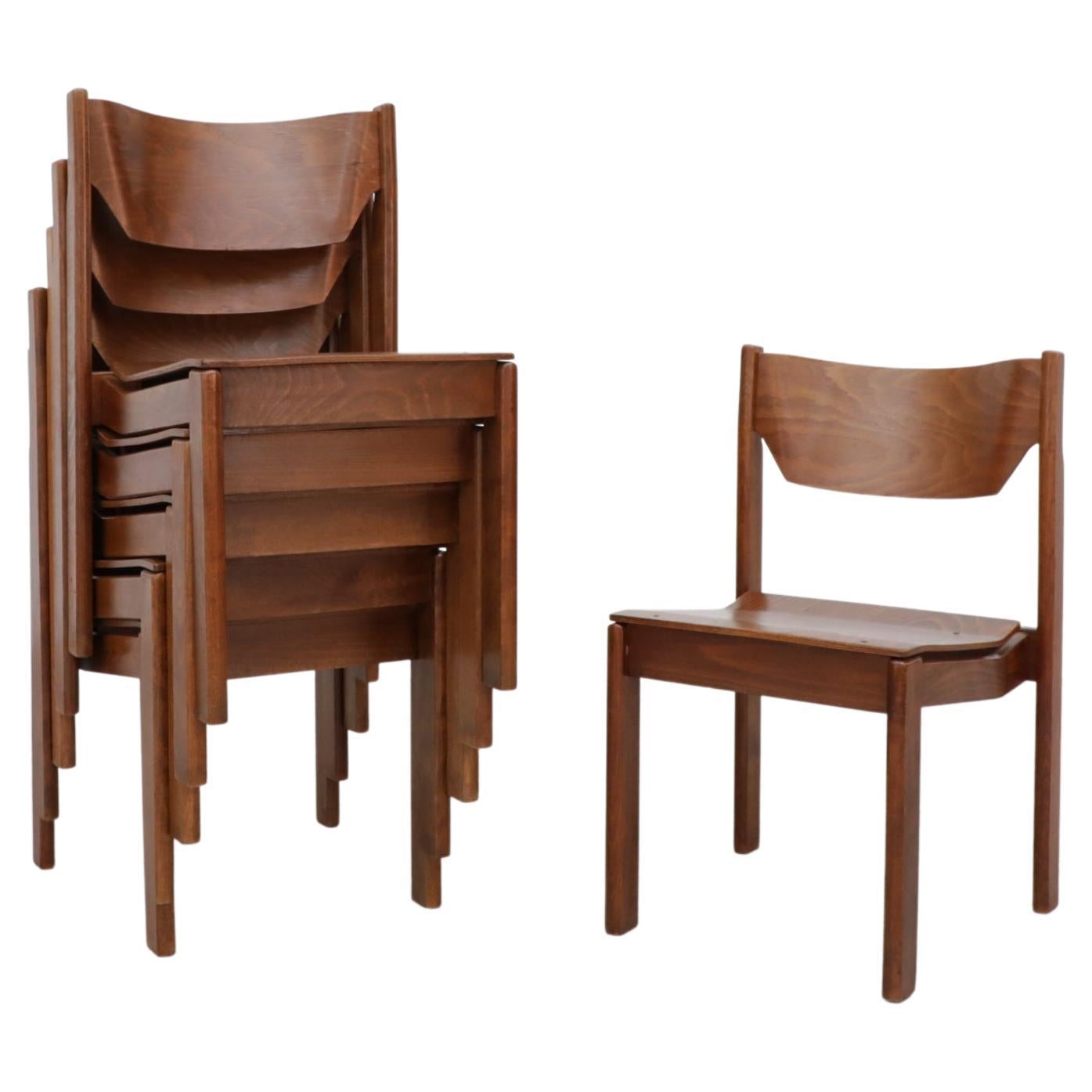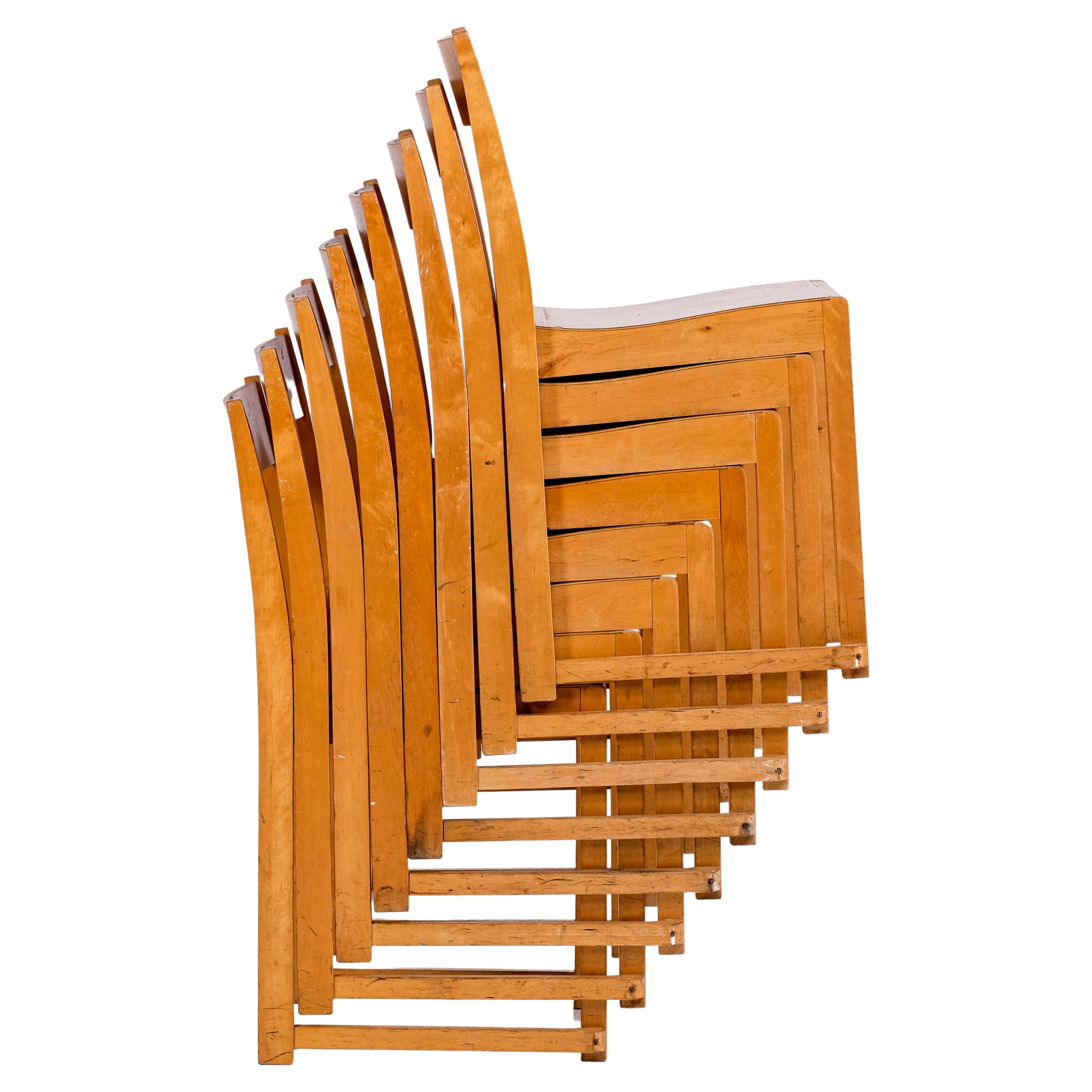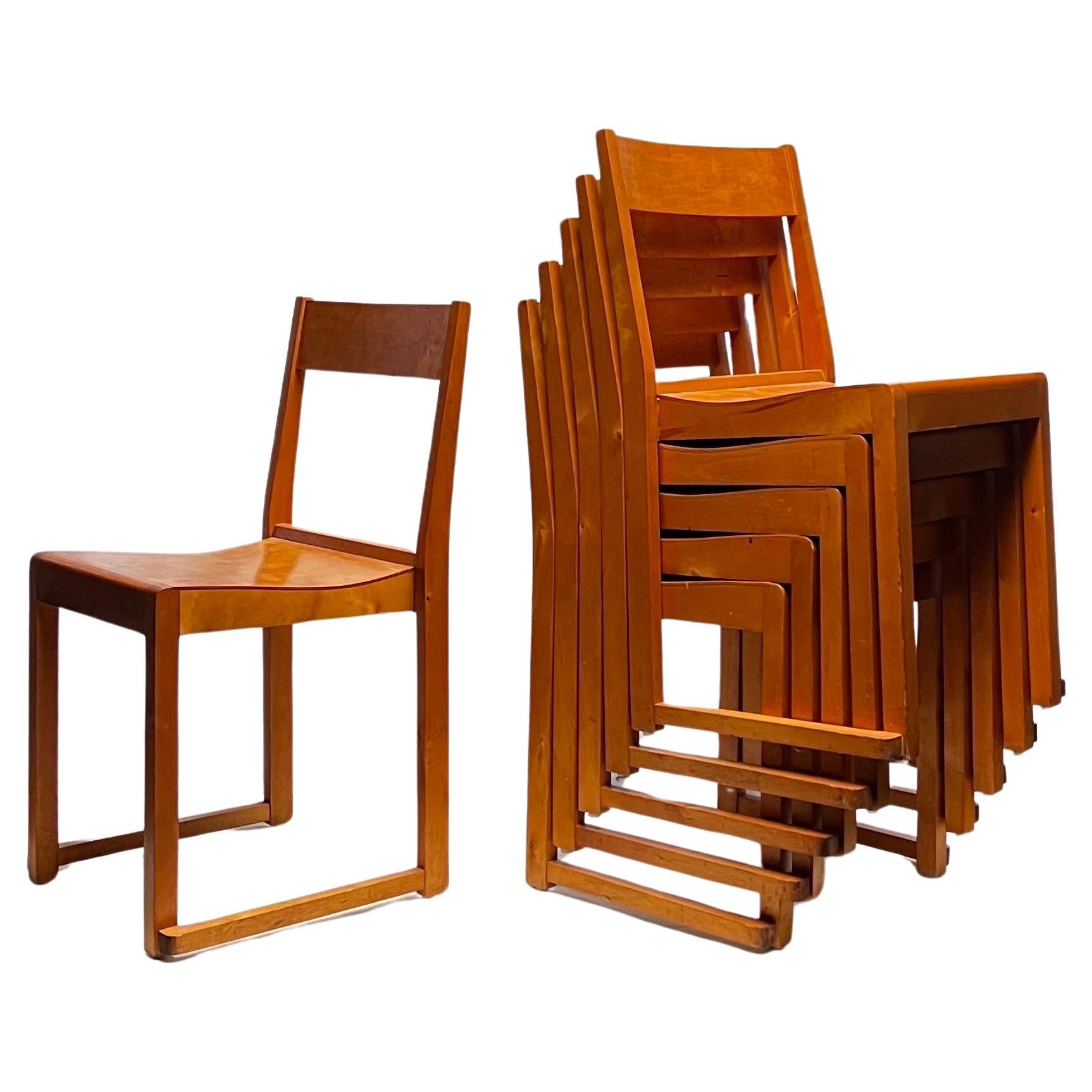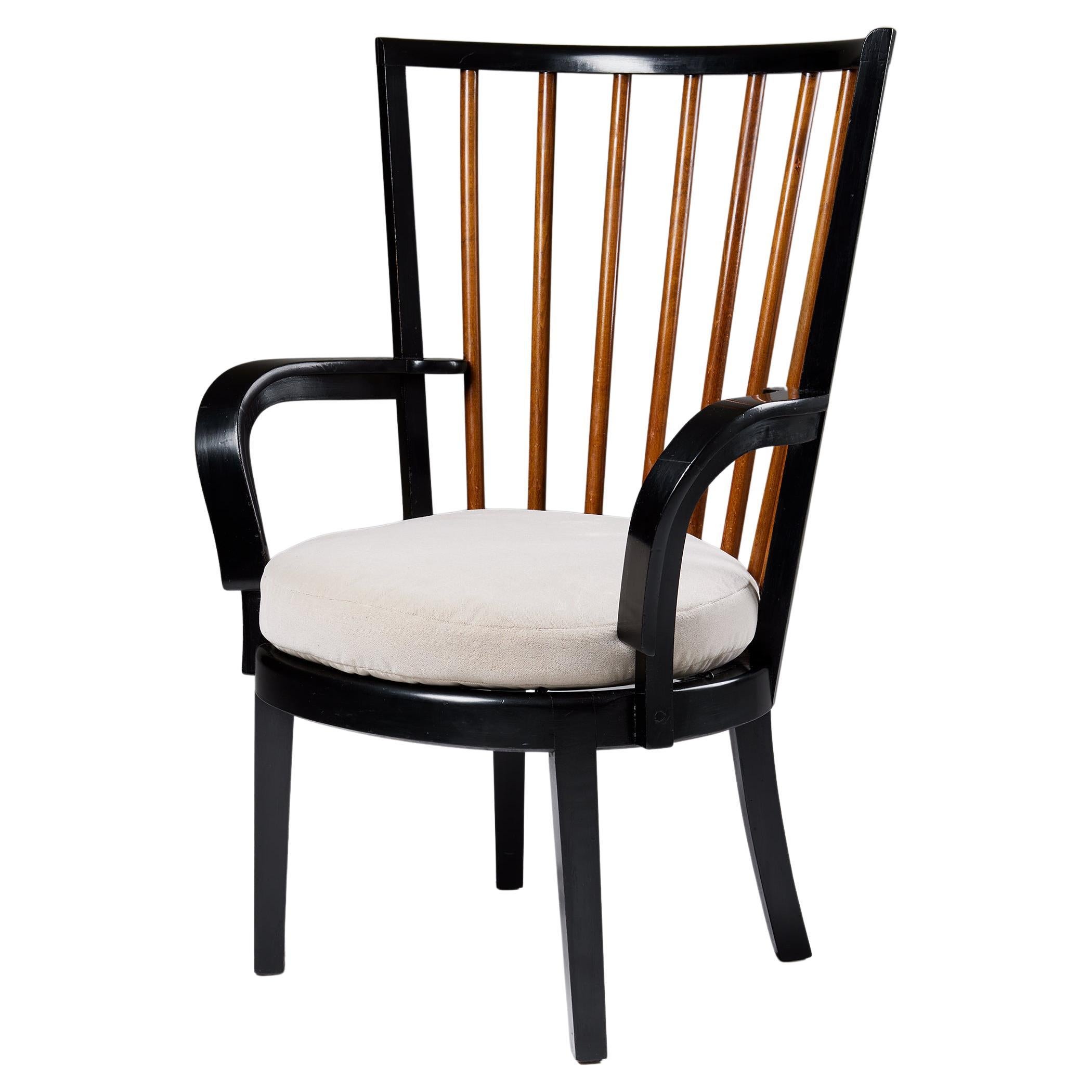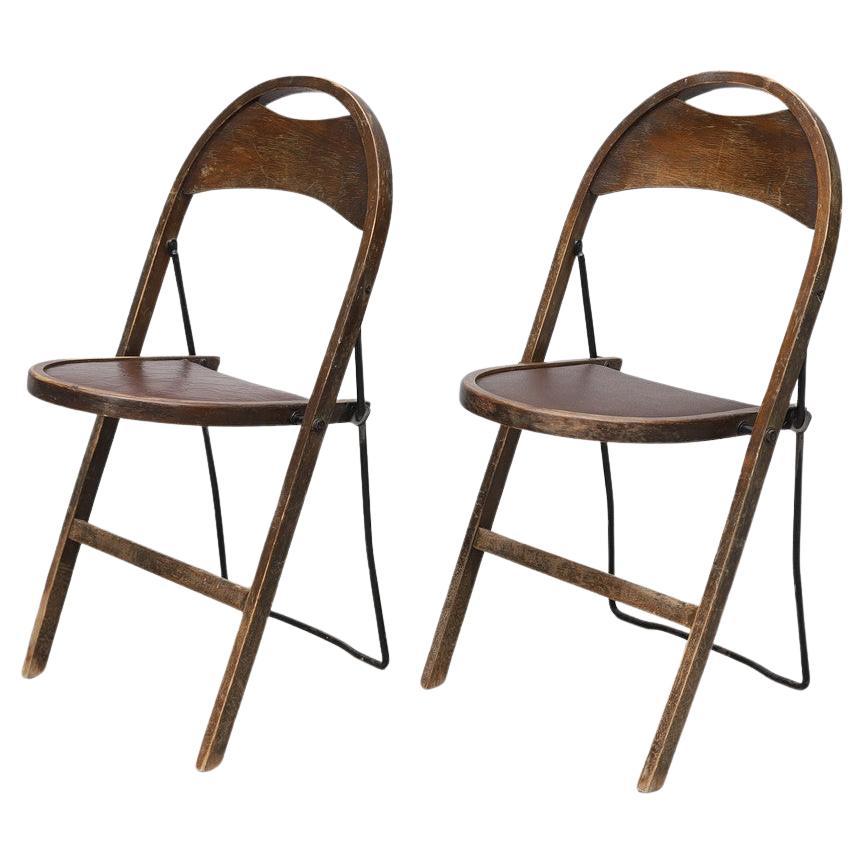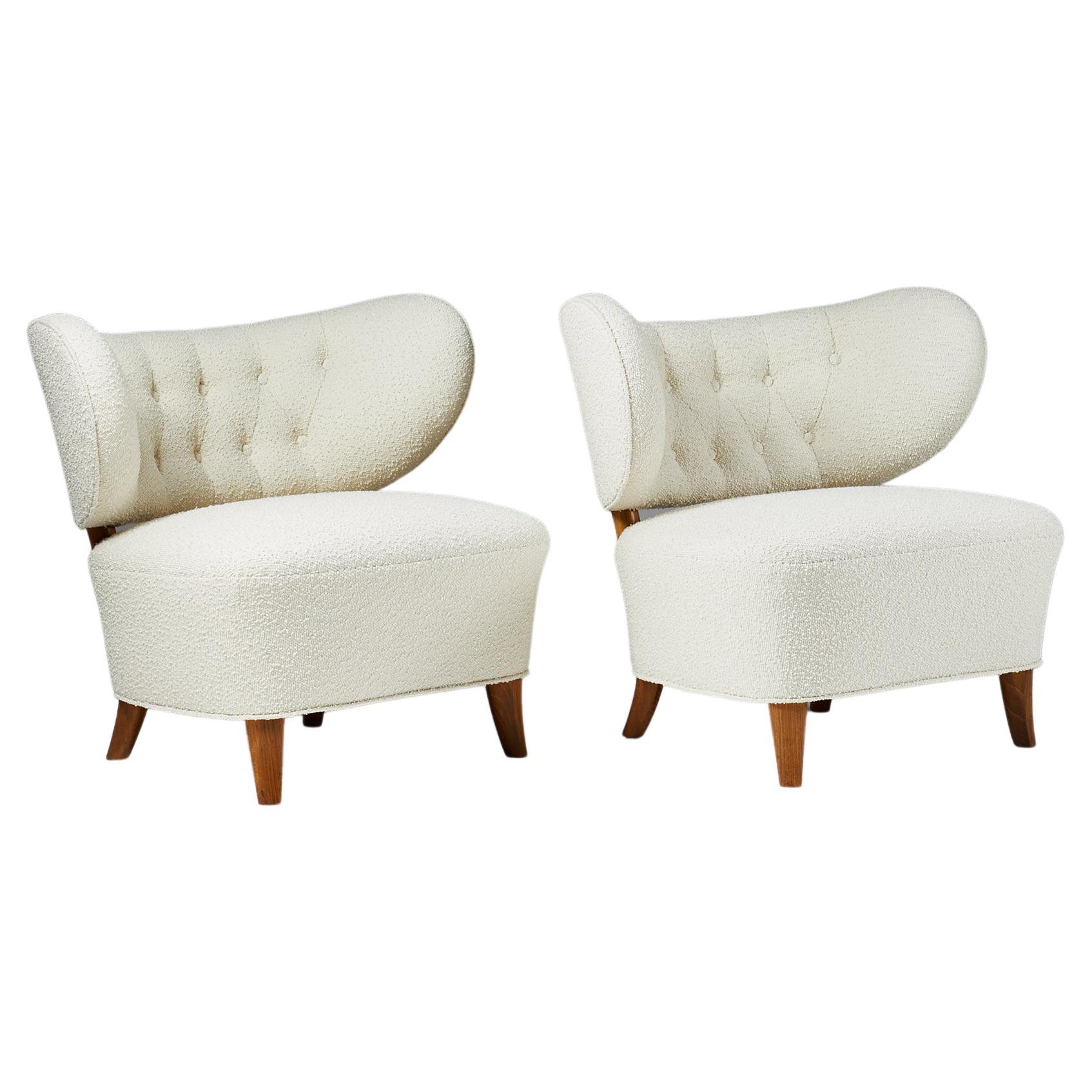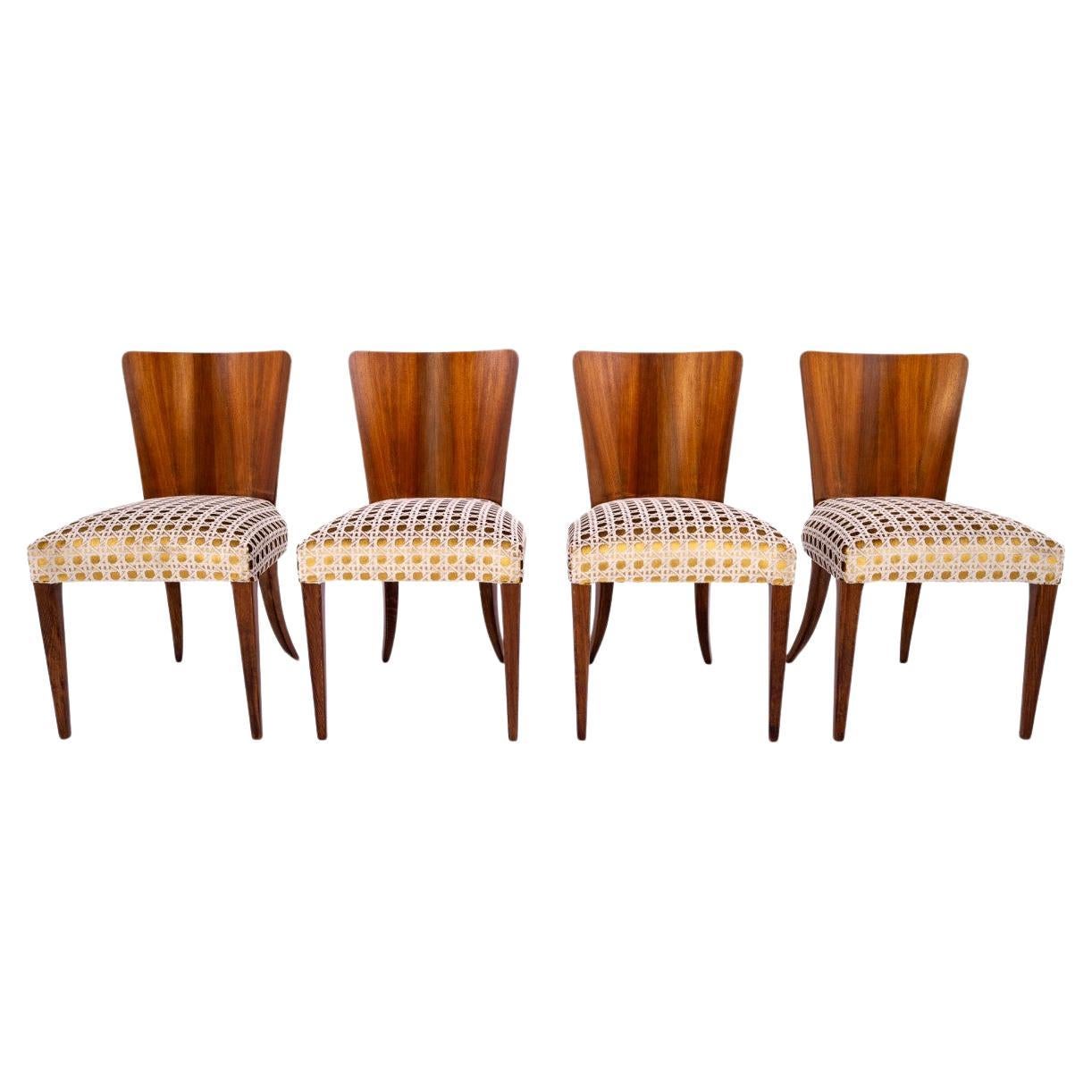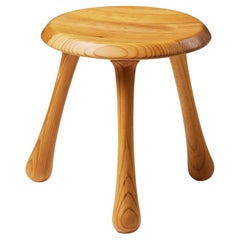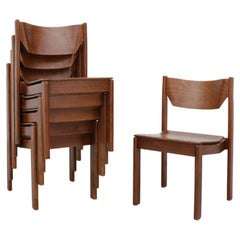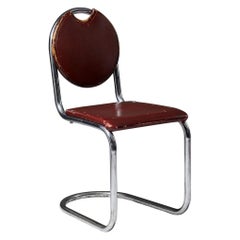
Chair Designed by Sven Markelius for Ds-Staal, Sweden, 1930's
View Similar Items
Want more images or videos?
Request additional images or videos from the seller
1 of 9
Chair Designed by Sven Markelius for Ds-Staal, Sweden, 1930's
About the Item
- Creator:Sven Markelius (Designer)
- Dimensions:Height: 32.49 in (82.5 cm)Width: 15.36 in (39 cm)Depth: 22.45 in (57 cm)Seat Height: 17.52 in (44.5 cm)
- Style:Mid-Century Modern (Of the Period)
- Materials and Techniques:
- Place of Origin:
- Period:
- Date of Manufacture:1930s
- Condition:Wear consistent with age and use. Minor losses. Minor structural damages.
- Seller Location:Stockholm, SE
- Reference Number:1stDibs: LU1006623281172
About the Seller
5.0
Recognized Seller
These prestigious sellers are industry leaders and represent the highest echelon for item quality and design.
Gold Seller
These expertly vetted sellers are highly rated and consistently exceed customer expectations.
Established in 1998
1stDibs seller since 2013
184 sales on 1stDibs
Typical response time: 1 hour
More From This SellerView All
- Armchair ‘Bridge’ Designed by Axel Einar Hjorth for Nk, Sweden, 1930sBy Axel Einar HjorthLocated in Stockholm, SEArmchair ‘Bridge’ designed by Axel Einar Hjorth for NK, Sweden, 1930s. The model was first exhibited at NK's spring exhibition in 1931 and at Ängby-villan in 1932. Our version, pictured above, was crafted using lacquered...Category
Early 20th Century Swedish Mid-Century Modern Armchairs
MaterialsUpholstery, Birch, Lacquer
- Pair of Easy Chairs Designed by Otto Schulz for Boet, Sweden, 1940sBy Otto SchulzLocated in Stockholm, SEPair of easy chairs designed by Otto Schulz for Boet, Sweden, 1940s. Wool upholstery and lacquered wood. This Schulz model is one of the designer’s rarest and finest chairs. Both chairs are newly reupholstered in the most luxurious Boucle fabric by one of Sweden’s best reupholsters. Otto Schulz was one of the most prominent furniture designers of his time; he founded the Swedish company Boet and an eponymous magazine that became an extremely influential design publication during the 1930s and 40s. This chair is based on the “Sulla chair...Category
Mid-20th Century Swedish Mid-Century Modern Wingback Chairs
MaterialsWool, Wood
- Stool Designed by Ingvar Kamprad for Habitat, Sweden, 2004By Ingvar KampradLocated in Stockholm, SEStool designed by Ingvar Kamprad for Habitat, Sweden. 2004. Lacquered pine. Stamped. Measurements: H: 36 cm / 1' 2" Diameter: 32 cm / 1' 1/2".Category
Mid-20th Century Swedish Mid-Century Modern Stools
MaterialsPine
- Set of Six Chairs Designed by Josef Frank for Svensk Tenn, Model 725, SwedenBy Svenskt Tenn, Josef FrankLocated in Stockholm, SESet of six chairs designed by Josef Frank for Svensk Tenn, Model 725. Sweden. 1938. Mahogany and original leather. Literature: Kristina Wängberg Eriksson, Jan Christer Eriksson, "Josef Frank Möbelformgivaren", Carlsson Bokförlag, Stockholm 2014, p. K 18 H: 90 cm W: 58 cm D: 63 cm SH: 43 cm Armrest height: 69 cm (at the highest point) Josef Frank was a true European, he was also a pioneer of what would become classic 20th century Swedish design and the “Scandinavian Design Style”. Austrian- born Frank started his design career as an architect after having trained at the Technische Hochschule in Vienna between 1903 and 1910. After his training he went on to teach at Kunstgewerbeschule (The Viennese School of Arts and crafts) where he developed and espoused the new school of modernist thinking towards Architecture and Design that was coming to fruition in Vienna at the time. He also went on to lead the Vienna Werkbund throughout the 1920s. This was a truly progressive group of Architects and Designers who set about improving the daily lives of Austrian people through modernist design and architecture in partnership with Arts and Crafts ideals and construction. Frank’s leadership of the Werkbund had already cemented his place at the forefront of European design. Frank’s time in Vienna was typified by his design for the “Die Wohnung” exhibition of the Deutscher Werkbund in Stuttgart, 1927 where he exhibited along side his contemporaries at the forefront of design, such as the likes of Le Corbusier and Walter Gropius. Here he showed a specially designed pair of flat-roofed reinforced concrete houses in what is now seen as a typical modernist style. What separated Frank’s house from the other 32 houses of the exhibition was the interior and furniture inside the building. It was described as “Neo-Classical” and filled with an eclectic mix of period pieces, modern design and pieces designed by Frank himself that seemed to cross the two worlds. This was a complete opposite direction to that which his fellow Architects were travelling in with their pared back and angular aesthetics. Frank said of his own work: “The house is not a work of art, simply a place where one lives,” and by this reasoning Frank rejected the regimental mechanisation of the living space that his contemporaries believed in, instead he set about creating congenial and spontaneous interiors. Frank’s practice saw him placing the bright colours and the soft forms of nature back into the furnishings and interiors that he thought modernism sorely mist. Frank, along with Oskar Walch set up Haus und Garten in Vienna in 1925. This was Frank’s first commercial foray into furniture and home furnishings and the company went on to become the most influential furnishing house in Vienna with a riotous depth of colour and interesting shapes becoming the trademark of their design. However this success was to come to an end with rise of Nazism in Vienna in the early 1930’s. Frank was Jewish, and he and his wife Anna decided they would leave Vienna for her motherland: Sweden, in 1933. Frank continued to design for Haus and Garten, visiting Vienna occasionally and designing the pieces that would continue to be the company’s best...Category
Vintage 1930s Swedish Scandinavian Modern Chairs
MaterialsLeather, Mahogany
- Armchair ‘Eva High’ Designed by Bruno Mathsson for Karl Mathsson, Sweden, 1960By Bruno MathssonLocated in Stockholm, SEArmchair ‘Eva High’ designed by Bruno Mathsson for Karl Mathsson, Sweden, 1960. Birch framing, braided leather upholstery and a textile neck pillow. Stampe...Category
Mid-20th Century Swedish Mid-Century Modern Armchairs
MaterialsBirch, Leather, Textile
- Stool Model 927 Designed by Josef Frank for Svenskt Tenn, Sweden, 1950sBy Josef FrankLocated in Stockholm, SEStool model 927 designed by Josef Frank for Svenskt Tenn, Sweden, 1950s. Mahogany and rattan. Measures: H: 43 cm W: 43 cm D: 28 cm Josef Frank was a true European, he was also a pioneer of what would become classic 20th century Swedish design and the “Scandinavian Design Style”. Austrian- born Frank started his design career as an architect after having trained at the Technische Hochschule in Vienna between 1903 and 1910. After his training he went on to teach at Kunstgewerbeschule (The Viennese School of Arts and crafts) where he developed and espoused the new school of modernist thinking towards Architecture and Design that was coming to fruition in Vienna at the time. He also went on to lead the Vienna Werkbund throughout the 1920s. This was a truly progressive group of Architects and Designers who set about improving the daily lives of Austrian people through modernist design and architecture in partnership with Arts and Crafts ideals and construction. Frank’s leadership of the Werkbund had already cemented his place at the forefront of European design. Frank’s time in Vienna was typified by his design for the “Die Wohnung” exhibition of the Deutscher Werkbund in Stuttgart, 1927 where he exhibited along side his contemporaries at the forefront of design, such as the likes of Le Corbusier and Walter Gropius. Here he showed a specially designed pair of flat-roofed reinforced concrete houses in what is now seen as a typical modernist style. What separated Frank’s house from the other 32 houses of the exhibition was the interior and furniture inside the building. It was described as “Neo-Classical” and filled with an eclectic mix of period pieces, modern design and pieces designed by Frank himself that seemed to cross the two worlds. This was a complete opposite direction to that which his fellow Architects were travelling in with their pared back and angular aesthetics. Frank said of his own work: “The house is not a work of art, simply a place where one lives,” and by this reasoning Frank rejected the regimental mechanisation of the living space that his contemporaries believed in, instead he set about creating congenial and spontaneous interiors. Frank’s practice saw him placing the bright colours and the soft forms of nature back into the furnishings and interiors that he thought modernism sorely mist. Frank, along with Oskar Walch set up Haus und Garten in Vienna in 1925. This was Frank’s first commercial foray into furniture and home furnishings and the company went on to become the most influential furnishing house in Vienna with a riotous depth of colour and interesting shapes becoming the trademark of their design. However this success was to come to an end with rise of Nazism in Vienna in the early 1930’s. Frank was Jewish, and he and his wife Anna decided they would leave Vienna for her motherland: Sweden, in 1933. Frank continued to design for Haus and Garten, visiting Vienna occasionally and designing the pieces that would continue to be the company’s best sellers long after Frank was forced to hand the company over in 1938 after the Third Reich annexation of Austria. When Josef and Anna had moved to Sweden Frank had struck up a working relationship with Design shop owner Estrid Ericson. Ericson was the proprietor of Svenskt Tenn that at this point was a successful interiors shop in Stockholm with the royal warrant of appointment to the Swedish Royal Household. In 1935 Frank had become the chief designer for Svenskt Tenn and had set about putting all of his creative effort into his designs for the company. At the World Expositions in Paris in 1937 and New York in 1939 the world saw for the first time the wealth of products that Frank had been working on, ranging from candlesticks to cabinets, there was not a domestic object that Frank had not subjected to his colourful, comfortable and organic style of Modernism. Frank’s new school of Modernism championed ideas such as chairs having a freeing, open back and that “If one desires the room to be comfortable…all pieces of furniture should allow for a free view of the separating line between the floor and the wall. A cabinet without legs breaks this line and thus reduces the feeling of space.” A world-wide audience tired of classic Modernism’s furniture with solid planes and aggressive forms leapt upon these ideas and Franks natural and bright designs for Svenskt Tenn became internationally desired. Frank created over 2000 designs for Svenskt Tenn and his products continue to be the core of their brand. Frank’s rejections of tubular metal and heavy lacquers within his furniture have insured his unique light form of Modernism continues to influence and flourish today. His natural toned mahogany and walnut pieces along with his tactile leather covered and brightly shaded lighting still bring the forms of nature back into the home. Original Frank pieces are now increasingly rare, highly desirable and are the epitome of “Scandinavian Design”. Renowned Designer and Academic Isle Crawford...Category
Vintage 1950s Swedish Mid-Century Modern Chairs
MaterialsRattan, Mahogany
You May Also Like
- Steel Tube Chair Designed by Sven Markelius for Ds Staal Sweden, 1930sBy Sven Markelius, DS StålrörsmöblerLocated in Valby, 84Rare and important Steel tube side chair designed by Sven Markelius for DS Staal in Sweden in the 1930s, the chair is designed in the 1930s for the EPA Bar in Stockholm. This chair is a good example of how the Bauhaus school inspired many Scandinavian Architects like Sven Markelius, Frits Schlegel, Vilhelm Lauritzen and many others. Literature: Eva Rudberg. 'Sven Markelius Architect', Arkitektur Förlag 1989, pictured p. 90. Ingrid Sommar. 'Stockholm Modern', Wahlström & Widstrand 1998, pictured p. 184. Sven Markelius used a stool in a similar design for the Helsingborg Concert Hall in 1932. In 1936, Markelius was commissioned to transform an old shop in Drottninggatan, Stockholm, into an Epa bar, where this chair was found. Enhets Pris Aktiebolaget (EPA) was presumably satisfied, because Markelius was given other tasks by EPA in the following years. 1937 to Epa-bar, Sweden. Literature: Dan Gordan: the Swedish chair, p. 97 The chair is in a beautiful original condition with patinated natural leather and chromed steel tubes in good condition. Sven Markelius was a big and important part of Swedish functionalism. Sven Markelius was educated from 1909 to 1913 at the Royal Technical University in Stockholm and at the Academy of fine Arts and subsequently went on study trips to Germany and Italy. He then underwent solid training with the architects Ragnar Östberg, Erik Lallerstedt and Ivar Tengbom...Category
Vintage 1930s Swedish Scandinavian Modern Side Chairs
MaterialsSteel
- Set of Six Sven Markelius 'Orchestra' ChairsBy Sven MarkeliusLocated in Dronten, NLSet of six stacking chairs in birch designed by the Swedish architect Sven Markelius. Manufactured by Bodafors for the Helsingborg Concert Hall in 1932. A landmark of Swedish archi...Category
Vintage 1930s Swedish Scandinavian Modern Chairs
MaterialsBirch, Plywood
$5,750 / set - Sven Markelius Style Dark Stained Birch Stacking ChairsBy Sven MarkeliusLocated in Los Angeles, CALightly refinished Sven Markelius style dark stained birch stacking chairs. In lightly refinished but overall great condition with some visible we...Category
Mid-20th Century Dutch Mid-Century Modern Chairs
MaterialsBirch
- Set of Eight Sven Markelius 'Orchestra' Chairs, 1940sBy Sven MarkeliusLocated in Stockholm, SESet of 8 'Orkesterstolen' chairs by Sven Markelius, Sweden, 1940s. The chairs were originally designed for Helsingborg Concert Hall.Category
Vintage 1930s Swedish Scandinavian Modern Chairs
MaterialsBirch
- Set of Eight Modernist Orchestra Chairs by Sven Markelius, Sweden 1930’sBy Bodafors, Sven MarkeliusLocated in Valby, 84Set of Eight Sven Markelius Orchestra Chairs designed for Helsingborg concert hall in 1932. These specific chairs are manufactured by Bodafors in the 1930s, the chairs are made in pa...Category
Vintage 1930s Swedish Scandinavian Modern Dining Room Chairs
MaterialsBirch
- Sven Markelius modernist stacking chairs mint condition 1931 nice set of 6By Bodafors, Sven Markelius, SMF Svenska Möbelfabriken BodaforsLocated in Forest, BESet of 6 minimal and elegant lightweight confortable stacking chairs by modernist architect Sven Markelius. Designed and produced for the orchestra of the Helsingborg theater in Swed...Category
Vintage 1930s Swedish Bauhaus Dining Room Chairs
MaterialsFaux Leather, Birch
Recently Viewed
View AllMore Ways To Browse
Leather Chair Sweden
Swedish Leather Chairs
W1 Chair
Mid Century Chair S Black
Swedish Upholstery Chairs
Black Sweden Chair
Mid Century Swedish Leather Chair
Swedish Mid Century Leather Chair
Swedish Mid Century Modern Leather Chair
Swedish 1930 Chair
Swedish Furniture 1930 Chair
Chair 57
1930s Steel Chairs
Swedish Chair Black Leather
Swedish Steel Chairs
Swedish Animal Skin Chairs
1930s Animal Skin Chairs
8 Swedish Chairs
